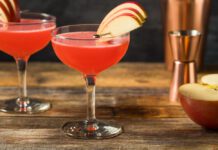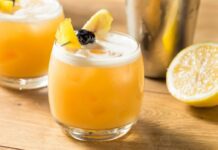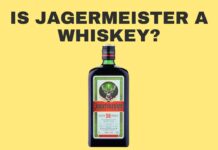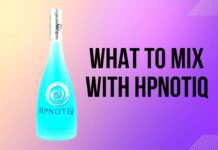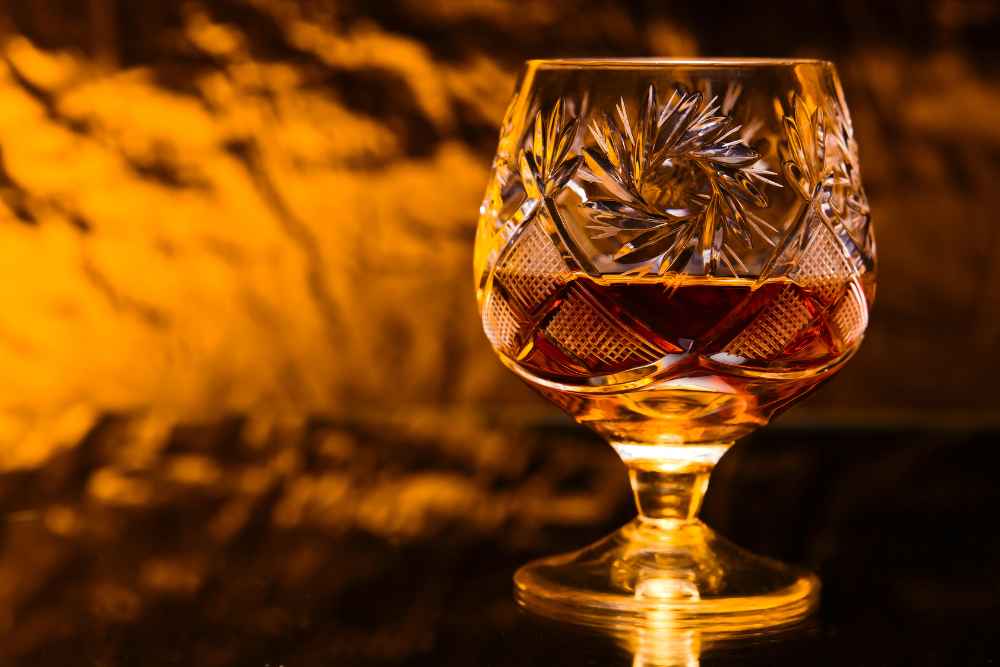This page may contain affiliate links. Please see our Disclaimer for more information. Always drink responsibly and adhere to your local legal drinking age.
Introduction
Brandy lovers, prepare for an in-depth exploration of two popular designations – VS and VSOP! In this ultimate guide, we’ll delve into the fascinating world of brandy, examining its various types, including Cognac and Armagnac.
Discover the critical differences between VS (Very Special) and VSOP (Very Superior Old Pale) in age, flavor, cost, and more. Also, learn to choose the perfect glassware and serving temperature for your favorite spirit.
Key Takeaways:
- VS (Very Special) and VSOP (Very Superior Old Pale) are classifications of brandy that refer to different aging requirements.
- Cognac and Armagnac are two popular types of brandy, each with a unique flavor profile and production process.
- Grape varieties, production process, and storage duration can all significantly affect the quality and aging of brandy.
- Choosing the proper glassware, serving temperature, and food pairings can significantly enhance your enjoyment of this beloved spirit.
Understanding Brandy: A Brief Overview
Are you ready to explore the fascinating world of brandy? Join us as we delve into the ultimate guide on VS Vs. VSOP Brandy unravels their unique characteristics and suits your palate.
In this comprehensive yet accessible article, we’ll take you through a brief overview of brandy, discover different types like Cognac and Armagnac, and unveil the meaning behind those mysterious acronyms – VS (Very Special), VSOP (Very Superior Old Pale), and XO (Extra Old).
The Different Types Of Brandy
Explore the world of brandy and discover the unique characteristics of Cognac, Armagnac, and other types of brandy. From aging processes to grape varieties used, there’s so much to learn about these distinct spirits.
Cognac
Cognac, a highly esteemed and luxurious brandy, is exclusively produced in the Cognac region of France. This exquisite spirit is made from distilled white wine, which undergoes double distillation using copper pot stills to create a more refined and smoother final product.
This refined beverage has been savored by cocktail connoisseurs over the centuries and boasts high-profile fans like Napoleon Bonaparte and influential figures in today’s hip-hop scene.
Its popularity lies not merely on its unique flavor profile derived from diverse grape varieties but also on its complex aging process that results in distinctive categories such as VS (Very Special), VSOP (Very Superior Old Pale), XO (Extra Old), and even Hors d’Age.
Armagnac
Armagnac is an exquisite type of French brandy, sharing characteristics with its more famous cousin, Cognac. Produced in the Gascony region of Southwest France, this grape-based spirit has a unique flavor profile that sets it apart from other varieties of Brandy.
As an excellent choice for cocktail drinkers looking to expand their palates or enjoy a fantastic nightcap, Armagnac offers versatility in how it can be consumed.
Sip it neat to savor its intricate flavors, or use it as a bold component in classic cocktails such as Old Fashioned and Sidecar. Similar to Cognacs, Armagnacs also carry age classifications like VS (Very Special), VSOP (Very Superior Old Pale), XO (Extra Old), and Hors d’Âge; however, some minor differences may exist in terms of specific age requirements.
Other Types
Apart from Cognac and Armagnac, there are many other types of brandies that you can explore. For instance, you have American Brandy, which is made using a variety of fruits like apples and peaches.
This type of brandy is often blended with neutral-grain spirits. Similarly, Spanish and South African brandies are also gaining popularity recently.
While Spanish brandies are produced mainly in the Jerez region, South African ones usually use Chenin Blanc grapes for production.
The Meaning Behind VS, VSOP, And XO Brandy
VS, VSOP, and XO are all designations for different aging classifications of brandy.
VS Brandy (Very Special)
The VS Brandy, also known as “Very Special,” is the youngest classification of Cognac and is marked with three stars. It denotes a minimum age of two to two-and-a-half years, making it the most affordable option.
Despite its young age, VS Brandy can be enjoyed neat or in cocktails like the classic Sidecar. Some popular options include Martell VS, Courvoisier VS, and Hennessy V.S., all offering a rich taste experience at an accessible price point.
VSOP Brandy (Very Superior Old Pale)
VSOP Brandy, or “Very Superior Old Pale,” has been aged for at least four years, resulting in a smoother and more refined taste than its younger counterparts.
The youngest eau-de-vie used in the blend must be at least four years old for cognac and five years old for Armagnac.
Some famous examples of VSOP Brandy include Courvoisier VSOP, Hennessy VSOP, and Martell VSOP. These brands have become synonymous with quality due to their aging process in French oak barrels, resulting in flavors of dried fruit and vanilla with a hint of spice.
When choosing glassware for your VSOP cocktail, consider using a tulip-shaped glass or snifter to enhance the aroma and capture the complete flavor profile.
XO Brandy (Extra Old)
XO Brandy or Extra Old is considered the highest quality and most prestigious brandy. This cognac category has a minimum aging requirement of 10 years in oak barrels, resulting in a rich and complex flavor profile.
The extended aging period allows more profound and more intense flavors, such as dried fruits, spices, and wood notes to develop in the brandy.
For cocktail drinkers looking to elevate their drink experience, an XO cognac can add depth and sophistication to any cocktail recipe. The complexity of an XO cognac shines through even when mixed with other cocktails ingredients like citrus juices or syrups.
Factors That Affect Brandy Quality And Aging
The grape varieties, production process, and storage duration are some factors that can significantly affect the quality and aging of brandy.
Grape Varieties
Grape varieties are crucial in determining brandy’s quality and aging potential. Different grape varietals can impart unique flavors and aromas to the spirit, resulting in distinct profiles between other brands and types.
Some common grape varieties used in brandy production include:
- Ugni Blanc: This is the most widely planted grape in Cognac and is known for its high acidity. It produces light, floral spirit often blended with other varieties.
- Folle Blanche: Once the dominant grape in Cognac, it has a distinct fruitiness that some producers prize. However, it is susceptible to disease and has largely been replaced by Ugni Blanc.
- Colombard: A versatile grape that is used on its own and blended with other varieties. It produces a smooth, fruity spirit that is popular for mixing.
- Baco Noir: A hybrid variety explicitly created for use in Armagnac production. It imparts rich, spicy notes to the finished product.
The choice of grape variety can affect the flavor profile and how well the brandy ages over time. For example, some grapes may be more prone to oxidation or spoilage during aging, while others may offer more structure and complexity as they mature in oak barrels.
Producers must carefully consider their choice of grape variety when crafting their brandies, as it can significantly impact the final product’s overall quality and character.
Production Process
It is essential to understand the production process to create the perfect brandy. Here are the key steps in making quality brandy:
- Harvesting: The grapes used to make brandy are harvested in the fall when they have reached their ideal ripeness.
- Fermentation: The crushed grapes are placed in a vat and left to ferment naturally.
- Distillation: Once the fermentation process has ended, the liquid is distilled using copper pot stills to produce a clear spirit known as eau-de-vie.
- Aging: The eau-de-vie is then placed in oak barrels and left to age for a certain period, depending on its desired quality grade (VS, VSOP or XO).
- Blending: After aging, multiple barrels may be blended to create a particular blend or batch of brandy.
- Bottling: Once the blending process has been completed, the brandy is bottled and labeled with its corresponding quality designation.
Remember that these steps play a crucial role in determining the overall quality of your brandy. Each step contributes to its unique taste and aroma profile, from harvesting to bottling.
Storage And Aging Duration
Proper storage and aging duration are crucial to ensuring the highest quality brandy. Brandy is aged in oak barrels, which imparts unique flavors and aromas that develop over time.
The length of aging can vary between different types of brandy, with VS brandy requiring a minimum of two years aging in oak barrels, while VSOP involves a minimum of five years.
Furthermore, storing brandy away from direct sunlight and heat is essential as they can negatively affect its flavor and aroma. An incredible dark place such as a cellar or cabinet works best for extended storage periods.
VS Brandy Vs
What sets VS (Very Special) brandy apart from its higher-grade counterpart, VSOP (Very Superior Old Pale)? Find out the key differences in age, flavor, and cost in this guide to understanding brandy.
Age
The age of brandy is an essential factor in determining its quality and flavor profile. The older the drink, the smoother and more refined it becomes. VS or “Very Special” cognacs are aged for at least two years, while VSOP or “Very Superior Old Pale” cognacs must be aged at least four years.
On the other hand, XO (Extra Old) cognac must meet a requirement of at least six years of age to earn its designation. Aging occurs when eaux-de-vie (grape spirits) is left to mature in oak barrels, where they interact with oak wood tannins to create flavors like vanilla, caramel, and spice notes that would not have been present if consumed shortly after distillation.
Aging also intensifies naturally occurring aromas such as dried fruit, prunes, or figs typical of Armagnac styles, among others, while reducing woody tannins obtained from aging in new barrels due to evaporation processes happening over time via micropores interacting with oxygen within those used French Oak casks sometimes leading intense roasted coffee scents traditionally found within certain Cognacs elsewhere; all contributing further towards enhancing the drinking experience as you sip your favorite cocktail made using either VS vs. Vsop Brandy options.
Flavor
As brandy ages, its flavor profile evolves and becomes more complex. VS cognacs are typically lighter in flavor, with notes of fresh fruit and vanilla. As you move up to VSOP cognacs, you’ll notice deeper flavors of dried fruit, baking spices, and caramel.
The aging process is crucial in developing these nuanced flavors. Cognac is aged in barrels made from French oak, imparting additional flavor notes like toasted wood and vanilla.
The longer the brandy spends in these barrels (at least two years for VS), the more pronounced these flavors become.
Cost
One of the significant factors to consider when choosing between VS and VSOP Brandy is the cost. Generally, VS Brandy tends to be less expensive than its superior counterpart.
This is partly due to its shorter aging process and less complex flavor profile. For example, a bottle of Martell VS can cost around $30-$40, while Courvoisier VSOP may cost upwards of $50-$60.
However, it’s important to note that prices can vary widely depending on the brand and region of origin. Ultimately, your choice between the two will come from personal preference and budget constraints.
How To Choose And Enjoy Your Brandy
To fully enjoy your brandy, choose the right glassware, serve at the appropriate temperature, and pair it with complimentary food; read on to discover more tips for savoring this delightful spirit.
Choosing The Right Glassware
To fully appreciate the flavors and aromas of your brandy, it’s essential to serve it in the right glassware. Here are a few tips for selecting the perfect glass to enhance your drinking experience:
- Opt for a snifter or inhaler glass to help capture the aromas of your brandy and concentrate them at the top of the glass.
- Choose a glass with a wide bowl and narrow mouth to allow you to swirl your brandy gently and release its flavors.
- Look for glasses made from thinner, finer materials like crystal or lead-free glass, which can help reduce interference with the delicate nuances of your brandy.
- Avoid using tall or narrow glasses like highballs or flutes as they can hinder the release of aromas and prevent proper swirling.
- Ensure that your chosen glass’s temperature is consistent with your preferred serving temperature to maintain optimal drinking conditions.
By following these simple guidelines, you’ll be better equipped to enjoy all the subtleties and complexities that make brandy such a unique and enjoyable spirit.
Serving Temperature
To fully appreciate brandy’s complex flavors and aromatics, it should be served at room temperature. However, warming up the glass beforehand can enhance its characteristics even further.
Pour hot water into the glass and let it sit for a few minutes before discarding it and pouring it into your brandy.
It’s also worth noting that once prepared, brandy should be consumed as soon as possible to prevent oxidation from altering its flavor profile.
Pairing With Food
Pairing food with brandy can elevate the experience and bring out the unique flavors of the drink and the dish. Here are some tips for cocktail drinkers:
- Cheese: Brandy pairs well with a variety of cheeses, such as aged cheddar, blue cheese, and brie.
- Chocolate: Dark chocolate is a popular pairing for brandy due to its rich flavor profile.
- Fruit: Fresh or dried fruits, such as figs or apricots, can complement the fruity notes in brandy.
- Nuts: Almonds, hazelnuts, and walnuts are excellent choices to pair with brandy.
- Desserts: Brandy can be paired with sweet desserts like apple pie or crème brûlée to balance the sweetness.
Remember that personal preference plays a significant role in successful food pairings with brandy. Experimentation is encouraged to find the perfect combination that suits individual tastes.
Popular Brands Of VS, VSOP, And XO Brandy
Some popular brands of VS, VSOP, and XO brandy include Martell VS, Courvoisier VSOP, Hennessy VSOP, Remy Martin XO, Hennessy XO, and Martell XO.
Martell VS
Martell VS is a popular cognac brand that falls under the VS category, which means it has been aged for at least two years. It is a great option for cocktail drinkers who want a smooth and balanced flavor profile.
Martell VS is made from grapes grown in the Cognac region of France and aged in French oak barrels, which gives it a distinct oaky taste and aroma.
This cognac also boasts hints of dried fruit, vanilla, and caramel, making it an excellent choice for mixing with other spirits or enjoying on its own.
Courvoisier VSOP
Courvoisier’s expression is definitely worth trying if you’re looking for a high-quality VSOP cognac to use in your cocktail recipes. This French brand has produced exceptional cognacs since the early 19th century, and its VSOP offering is no exception.
The “VSOP” designation means this brandy has been aged in oak barrels for at least four years, giving it a rich and complex flavor profile with notes of dried fruit, vanilla, and spice.
Whether you’re making a classic Sidecar or experimenting with your unique creations, Courvoisier VSOP will add depth and character to any cocktail recipe.
Hennessy VSOP
Hennessy VSOP is a classic cognac aged in French oak barrels for at least four years, producing a smooth and balanced taste.
It offers vanilla, spices, and toasted oak aromas, making it the perfect addition to cocktails such as the Sidecar or Brandy Sour. This popular cognac brand has inspired street artists like Shepard Fairey and fashion designers such as Virgil Abloh, who created a limited edition bottle design for Hennessy.
Remy Martin XO
Remy Martin XO is a premium brand of cognac that falls under Extra Old (XO) brandy. This means it has been aged for a minimum of 10 years, giving it a rich and complex flavor profile.
One unique aspect of Remy Martin XO is its use of eaux-de-vie from the Grande Champagne and Petite Champagne regions. These two areas are highly regarded for producing some of the best grapes used in cognac production, making Remy Martin XO one of the most sought-after brands on the market.
Hennessy XO
Hennessy XO is the premium offering from one of the most renowned cognac houses in the world. This extra old blend comprises over 100 eaux-de-vie aged for a minimum of 10 years, creating a complex and smooth experience.
The flavor profile includes warm notes of dried fruit and spices with hints of chocolate and vanilla, making it perfect for sipping neat or as an ingredient in cocktails like a classic Sidecar.
Martell XO
Martell XO is a popular premium cognac brand that falls under the XO category, meaning it has been aged for at least 10 years in French oak barrels. It boasts a rich and complex flavor profile, with dried fruit, vanilla, and spices notes.
Martell’s Master Blender carefully selects and blends eaux-de-vie from different regions of Cognac to create this particular batch, ensuring consistent quality year after year.
When enjoying Martell XO as a cocktail ingredient or sipping it neat, using a tulip-shaped glass that allows room for swirling and capturing its aroma is recommended. The serving temperature should be slightly below room temperature to enhance the depth of flavor without compromising its smoothness.
FAQ
Q: What is VS cognac?
A: VS stands for “Very Special” and denotes that the cognac has been aged for at least two years.
Q: What is VSOP cognac?
A: VSOP stands for “Very Superior Old Pale” and denotes that the cognac has been aged for at least four years.
Q: What is the difference between VS and VSOP cognac?
A: The main difference is the age of the youngest eau-de-vie used to make the cognac. VS cognac requires a minimum of two years, while VSOP cognac requires a minimum of four years.
Q: What is XO cognac?
A: XO stands for “Extra Old” and denotes that the cognac has been aged for at least six years.
Q: What does “age of the youngest” mean in cognac?
A: The age of the youngest eau-de-vie used in making the cognac determines the quality and classification of the cognac.
Q: What does BNIC stand for?
A: BNIC stands for “Bureau National Interprofessionnel du Cognac” and is France’s governing body for cognac production.
Q: What is Napoleon cognac?
A: Napoleon cognac is a term often used interchangeably with XO cognac and denotes that the cognac has been aged for at least six years.
Q: What does “VS” stand for in cognac?
A: “VS” stands for “Very Special” and denotes that the cognac has been aged for at least two years.
Q: What does VSOP mean in cognac?
A: VSOP stands for “Very Superior Old Pale” and denotes that the cognac has been aged for at least four years.
Q: What does “XO mean in cognac?
A: XO stands for “Extra Old” and denotes that the cognac has been aged for at least six years.
Q: What is the difference between VSOP and XO cognac?
A: The main difference is the aging process. VSOP cognac requires a minimum of four years of aging, while XO cognac requires a minimum of six years.
Conclusion
In conclusion, understanding the different types of brandy can significantly enhance your appreciation and enjoyment of this beloved spirit. Knowing the age and quality grades will help you decide whether you prefer a VS cognac or an XO brandy.
Remember to choose the right glassware, serve at the proper temperature, and pair it with food for a truly satisfying experience. With this ultimate guide to VS vs. VSOP brandy, you’ll be able to impress your friends with your knowledge and create delicious cocktails that highlight the complexity and nuances of each type of brandy.



